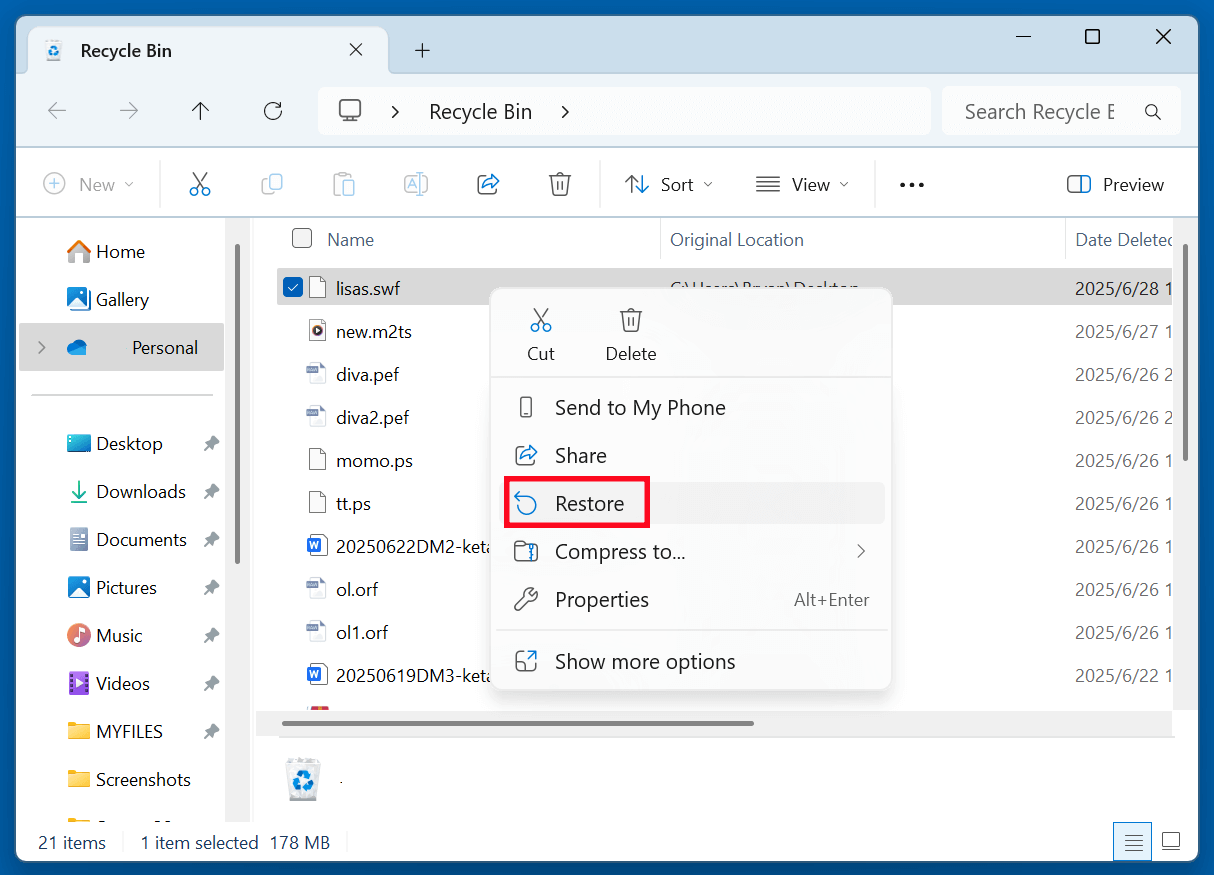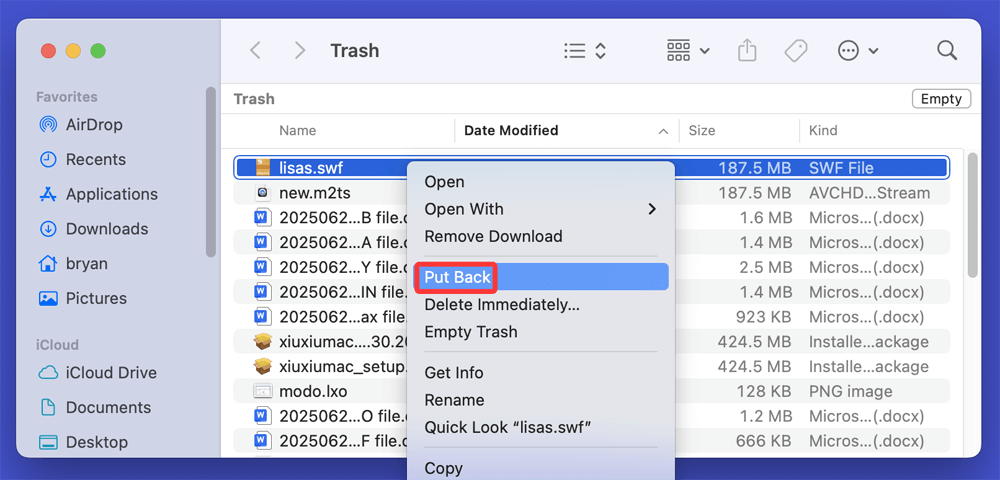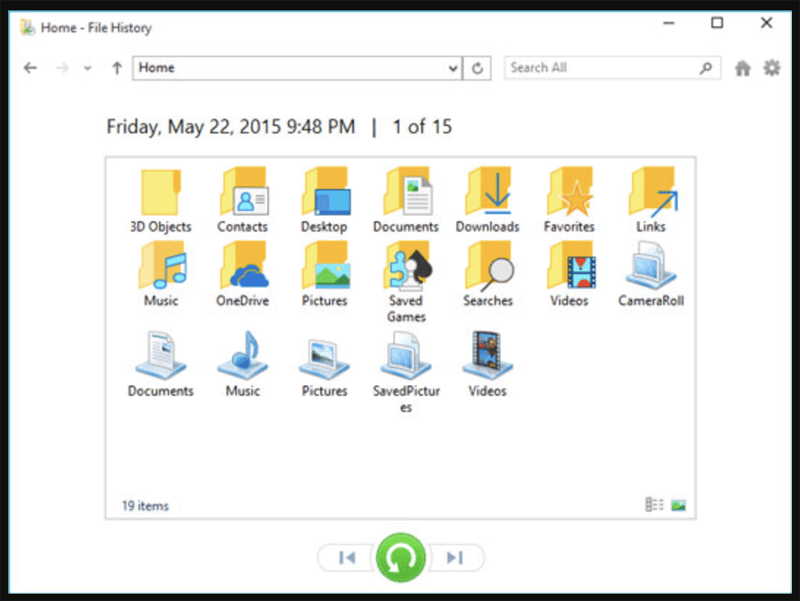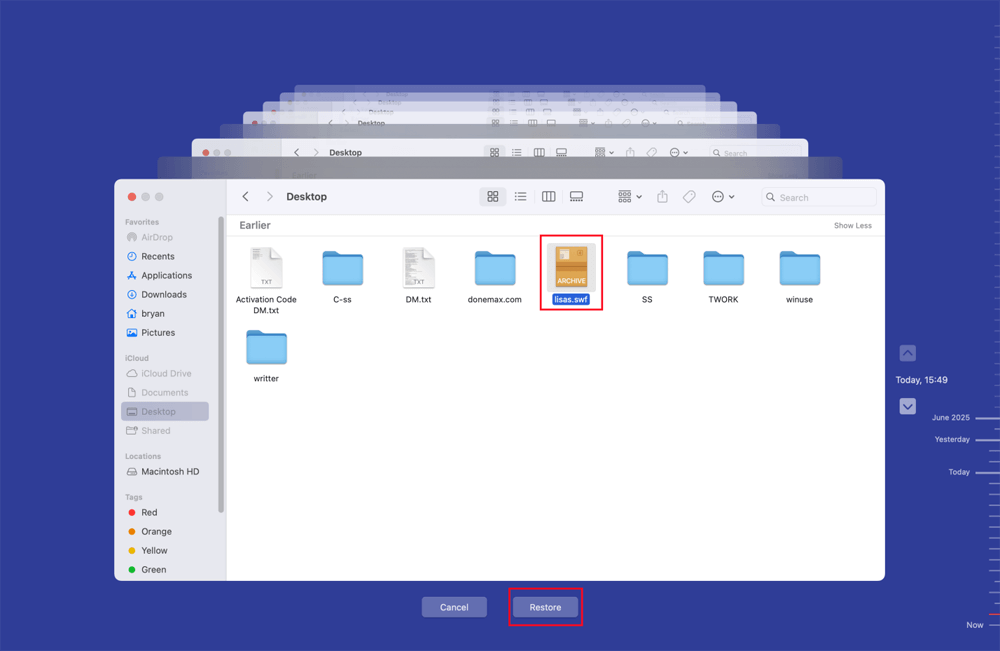Before we start: You may think it is impossible to recover a SWF file that has been emptied from recycle bin. It is not true. With right data recovery tool - such as Donemax Data Recovery, you can easily recover deleted SWF file and even recover lost SWF file from a formatted drive.
PAGE CONTENT:
SWF files, short for Small Web Format or Shockwave Flash, have been an essential part of web development, animation, and interactive online experiences for decades. Whether used in animated banners, browser games, e-learning content, or rich media websites, SWF files hold valuable content for both developers and end users.
However, accidental deletion, system crashes, malware attacks, or file corruption can lead to the unexpected loss of SWF files. Fortunately, in many cases, deleted SWF files can be recovered if you act quickly and use the right methods.
In this article, we'll guide you through everything you need to know about recovering deleted SWF files - from understanding their structure to using professional recovery tools and preventive measures.
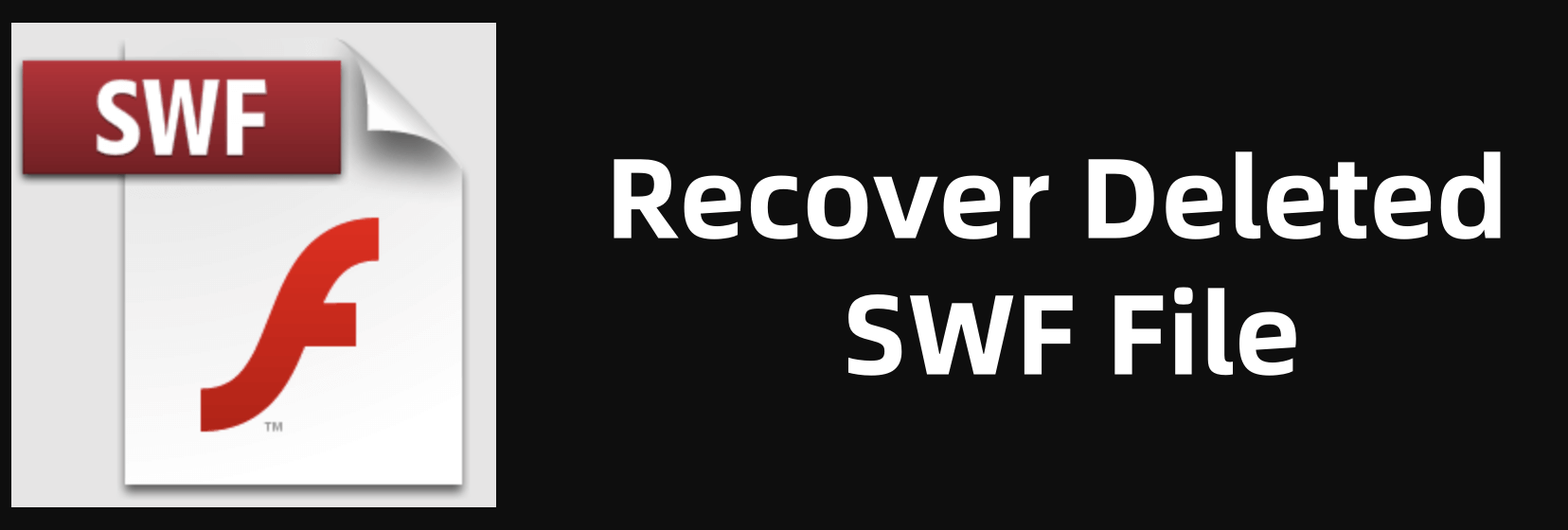
What is an SWF File?
An SWF file (Small Web Format or Shockwave Flash) is a compiled multimedia file format designed to deliver vector-based animations, graphics, audio, video, and interactive applications, primarily for the web. Originally created by Macromedia, SWF became a core component of Adobe's Flash platform after Adobe acquired Macromedia in 2005.
Despite Adobe officially discontinuing Flash Player in December 2020, SWF files remain in circulation, particularly within:
- Legacy web content
- Educational and corporate e-learning modules
- Browser-based interactive games
- Animated website banners and advertisements
- Interactive presentations and applications
Many organizations and developers still rely on SWF files for internal use, archiving, or converting old projects to modern formats.
◾Technical Characteristics of SWF Files
Understanding the structure and properties of SWF files helps in recognizing their importance and recovery potential:
| Property | Details |
| File Extension | .swf |
| MIME Type | application/x-shockwave-flash |
| File Structure | Binary, compressed or uncompressed data stream |
| Primary Content | Vector graphics, raster images, audio, video, scripts |
| Supported Scripting | ActionScript 2.0 and 3.0 |
| Typical Players | Adobe Flash Player, SWF File Player, Ruffle Emulator |
SWF files are designed to be compact, fast-loading, and scalable across different screen sizes, making them ideal for interactive and multimedia-rich online experiences.
Note: Although modern browsers no longer support Flash content natively, SWF files can still be opened with standalone tools like:
- SWF File Player – Dedicated player for running SWF files on Windows.
- Ruffle Emulator – A modern, open-source Flash Player emulator for browsers and desktop.
- Adobe Animate – Allows editing and converting SWF files into other formats.
- SWF Decompilers – Tools like JPEXS or Sothink SWF Decompiler for extracting assets or scripts from SWF files.
◾SWF Files in the Modern Context
With Flash Player's official end-of-life, many websites have migrated away from SWF content. However, millions of archived websites, games, animations, and educational resources still use the format.
Organizations may need SWF files for:
- Converting to modern HTML5 or WebAssembly equivalents
- Accessing old project files or corporate training content
- Preserving digital history, retro games, or legacy applications
As such, losing SWF files - especially unique or project-specific ones - can lead to the permanent loss of valuable intellectual property, historical assets, or functional content. That's why understanding how to recover and safeguard SWF files remains relevant, even in today's post-Flash world.
Common Reasons for SWF File Deletion or Loss
Losing important SWF files can happen in various ways, including:
- Accidental Deletion: Human error, such as mistakenly deleting files while clearing disk space.
- Formatting Drives: Formatting a USB, external hard drive, or partition containing SWF files.
- System Crashes: Sudden shutdowns or system errors that lead to file loss or corruption.
- Virus or Malware Attacks: Infections that corrupt or delete files.
- Unintentional Overwriting: Saving new data over existing SWF files.
- Software Glitches: Errors during file transfer, editing, or compression processes.
Fortunately, deleted files often remain recoverable until new data overwrites their space on the storage device.
Is it possible to recover deleted or lost SWF files?
Yes, it's possible to recover deleted SWF files, especially if you act promptly. Here are some important factors influencing recovery success:
- Time Since Deletion: The sooner you attempt recovery, the higher your chances.
- Storage Device Usage: Continued use of the drive reduces recovery success, as new data may overwrite deleted files.
- Recovery Tools Used: Specialized data recovery software can locate and restore SWF files even after deletion.
It's essential to stop using the affected storage device immediately to maximize recovery potential.
Best 4 Methods to Recover Deleted SWF Files
Here are several effective approaches to recover deleted SWF files:
Method 1. Recover Deleted SWF Files from Recycle Bin/Trash
The first step after realizing SWF files are missing is to check your system's Recycle Bin (Windows) or Trash (Mac).
For Windows Users:
- Double-click the Recycle Bin icon on your desktop.
- Search for the deleted SWF files.
- Right-click the desired file and select Restore to return it to its original location.
![Recover Deleted SWF Files from Recycle Bin]()
For Mac Users:
- Click the Trash icon on the dock.
- Look for the deleted SWF files.
- Right-click and choose Put Back to restore them.
![Recover Deleted SWF Files from Trash]()
If the files aren't in the Recycle Bin or Trash, move on to recovery software.
Method 2. Use File Recovery Software for SWF File Recovery
If your SWF files were permanently deleted or lost due to formatting, recovery software is your best option. Donemax Data Recovery software is compatible with Windows and Mac systems and support various file formats, including SWF.
Step 1. Download and Install the recovery tool on a different drive than the one containing lost SWF files.
Step 2. Launch the Software and select the drive or location where the SWF files were stored.
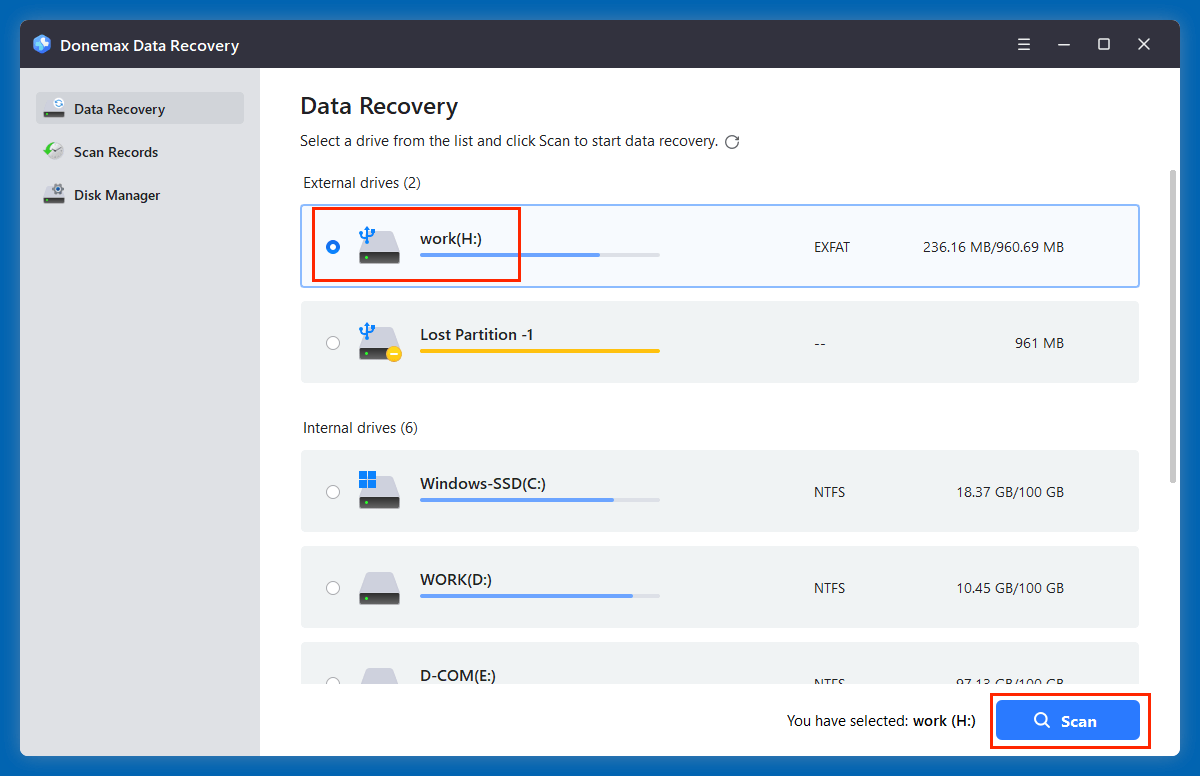
Step 3. Click on Scan button. Donemax Data Recovery will deeply scan the selected drive and find all recoverable files including all lost SWF files.
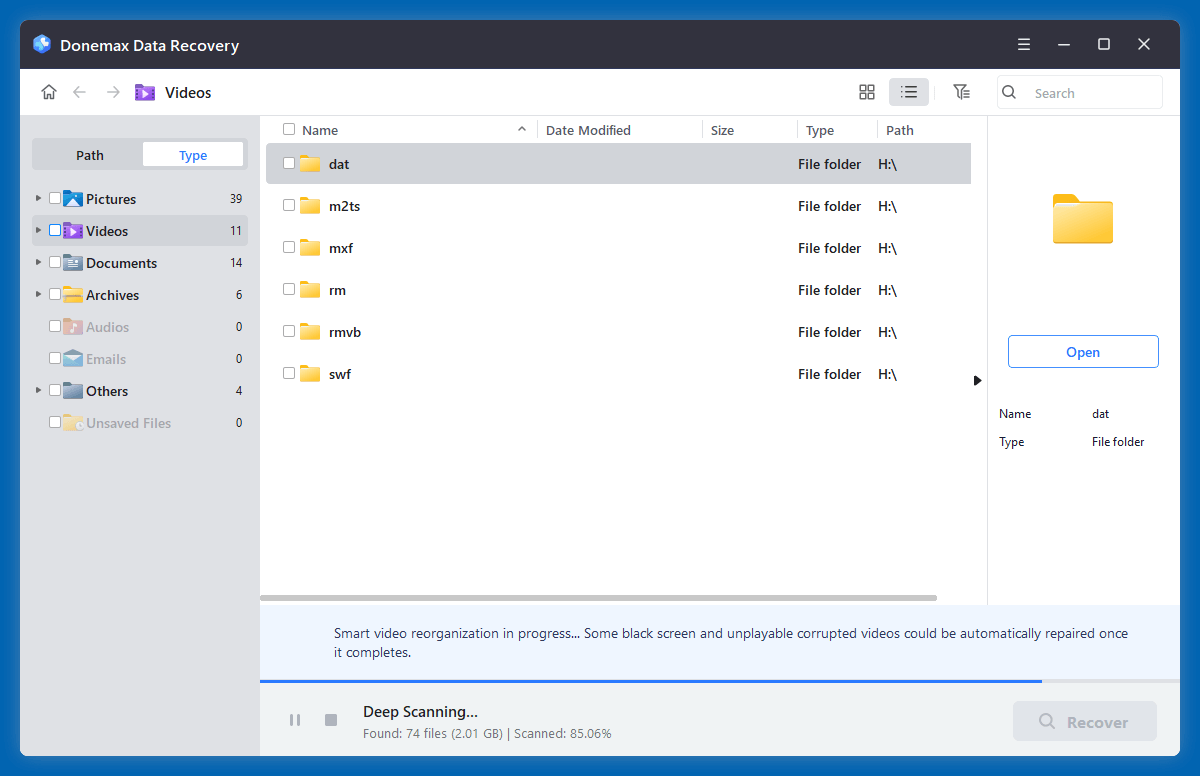
Step 4. Filter for SWF Files: Use the filter/search option to locate .swf files specifically.
Preview and Recover: Once the files appear, preview them (if supported) and click Recover to restore them to a safe location.
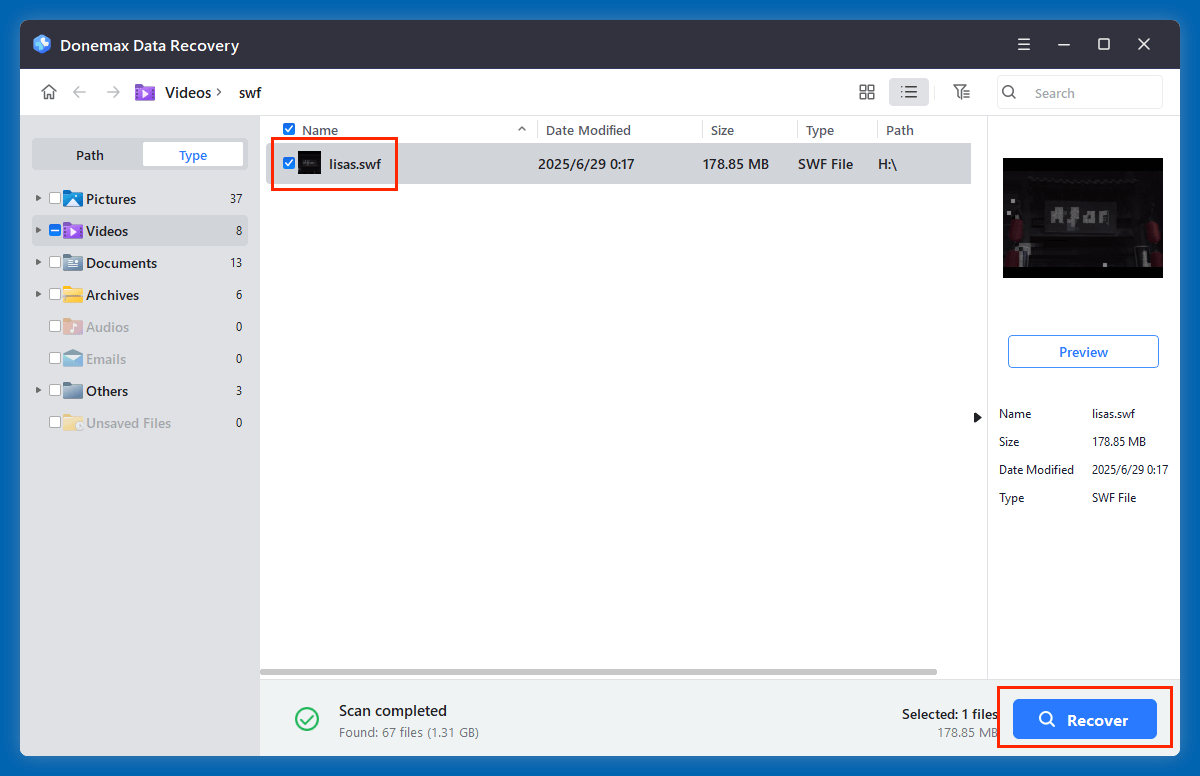
Note: Avoid saving recovered files back to the same drive to prevent overwriting other lost data.
Method 3. Restore Lost SWF Files from Backup
If you maintain regular backups, recovering SWF files can be straightforward.
For Windows Users (File History):
- Go to Control Panel > File History.
- Browse the folder containing your lost SWF files.
- Select the file version to restore.
![Select the file version to restore]()
For Mac Users (Time Machine):
- Connect your Time Machine backup drive.
- Enter Time Machine from the menu bar.
- Navigate to the SWF file location.
- Restore the desired files.
![Restore the desired files]()
Alternatively, check external drives, cloud storage (Google Drive, Dropbox, OneDrive), or backup services where SWF files may have been saved.
Method 4. Look in Browser Cache or Project Folders
For SWF files downloaded from the internet, browser cache folders may store copies temporarily:
- Locate the cache folder for your browser (e.g., Chrome, Firefox).
- Use tools like VideoCacheView to extract cached SWF files.
For developers or content creators:
- Check your project folders, editor autosave directories, or version-controlled repositories for older copies of SWF files.
Tips to Increase SWF File Recovery Success
- Stop Using the Storage Device: Immediately avoid writing new data to prevent overwriting deleted files.
- Use Read-Only Recovery Tools: Prevent further damage during recovery attempts.
- Perform a Deep Scan: If a quick scan fails, run a deep or sector-level scan to locate fragmented files.
- Preview Files Before Recovery: Ensure files are intact before restoring.
- Save to a Different Drive: Recovered SWF files should be stored on a different device to avoid overwriting.
How to Prevent Future SWF File Loss?
While recovery is possible, prevention is always preferable. Here are effective measures to safeguard your SWF files:
1. Maintain Regular Backups
- Use external drives, cloud storage, or backup software.
- Schedule automatic backups to protect project files and media assets.
2. Implement Version Control
- Developers can use Git or similar tools to track file versions.
- Roll back to earlier versions if accidental changes or deletions occur.
3. Use Antivirus and Anti-Malware Tools
- Keep your system protected from threats that can corrupt or delete files.
- Regularly update antivirus definitions.
4. Practice Safe File Management
- Double-check files before deleting.
- Organize SWF files in dedicated folders.
- Use file recovery software promptly if loss occurs.
5. Protect External Storage Devices
- Eject USB drives and external disks safely.
- Avoid exposing devices to physical damage, electrical faults, or malware.
Conclusion
Losing SWF files containing valuable animations, interactive applications, or games can be frustrating. However, with the right approach, most deleted SWF files can be recovered successfully.
First, check the Recycle Bin or Trash for recently deleted files. If that fails, utilize reputable data recovery software (such as Donemax Data Recovery) to scan your storage device. Backups, browser cache, and project folders also offer potential recovery options.
Remember, the key to successful SWF file recovery is speed - stop using the affected device immediately and begin recovery procedures. To avoid future data loss, implement regular backups, version control, and reliable antivirus protection.
By following these steps, you can restore your essential SWF files and safeguard your digital projects for the future.


Donemax Data Recovery
Donemax Data Recovery is one of the best data recovery software. It is easy-to-use and can help in recovering deleted, formatted, inaccessible or lost data from HDD/SSD, external disk, USB drive, SD card, camera or other storage devices.
Related Articles
- Jun 28, 2025Will System Restore Recover Deleted Files on Windows 11/10?
- Mar 06, 2025Unformat WD External Hard Drive: Recover Lost Data from a Formatted WD External Hard Drive
- Mar 11, 2024Just Remove USB Drive from Computer, All Data Is Gone, How To Fix It?
- Apr 25, 2025[4 Methods] Recover Lost WAV Audio File: A Complete Guide
- Mar 08, 2025WD Drive Data Recovery: Western Digital Data Recovery
- Jul 12, 2024How to Recover Lost Data from Dell XPS Laptop?

Charles
Charles, who lives in Sydney, Australia, is an editor & writer of Donemax Team. He is good at writing articles related with Apple Mac computers, Windows operating systems, data recovery, data erasure, disk clone and data backup, etc. He loves reading and playing tennis in his spare time and is interested in testing new digital devices such as mobile phones, Macs, HDDs, SSDs, digital cameras, etc.

Gerhard Chou
In order to effectively solve the problems for our customers, every article and troubleshooting solution published on our website has been strictly tested and practiced. Our editors love researching and using computers and testing software, and are willing to help computer users with their problems
